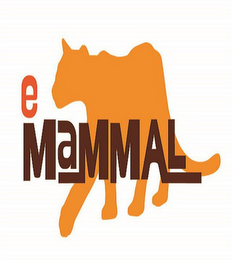Confusing Canids: Differentiating Red Foxes, Grey Foxes, and Coyotes
A recent study from eMammal found that citizen science volunteers are really good at identifying North American mammals from camera trap photos, with over 90% of the identifications correct. However, there are three species where people routinely get stumped, the canids, or members of the dog family. These include the red fox, grey fox, and coyote. It’s easy to see where people get confused as these species can look very similar at a glance. But, if you know where to look, there are some subtle but definitive tell-tale signs that will help you spot the differences when you are confused by which canid is on your camera trap.
The red fox (Vulpes vulpes), can be deceiving because they can actually be red, grey, black, and even white (if albino), although red is the most common. It might seem like the “red” fox is trying to trick you, but there are some indicators that can point you in the right direction. If you see a fox or coyote, but you aren’t sure which one it is... look for the “black boots”! Red foxes have black legs. They also have black-tipped ears (seen on the backsides), a white-tipped tail and a more dog-like face compared to the grey fox.

Red foxes have black leg, black-tipped ears (seen on the backsides), a white-tipped tail and a more dog-like face.
The grey fox (Urocyon cinereoargenteus, don’t worry...that’s hard to pronounce for everyone!) also has a deceiving name as it can be grey, red or brown in color, but it too has some clear markings that will help you distinguish a grey fox from its canid counterparts. This species has a black tipped tail and what I like to call a black “racing stripe” down its back. The grey fox also has a more cat-like face than either the red fox or the coyote.

Grey foxes have a black tipped tail and a black stripe down its back. They have a more cat-like face.
The coyote (Canis latrans), is arguably the hardest of the three to differentiate. It has varied coloration, but is typically grey, brown or black. It has a very dog-like face and a long and fluffy tail. The most distinguishing attribute of the coyote is its size. It has much longer limbs, ears and snout, making it larger and taller than either fox.

The coyote has a very dog-like face and overall is taller and larger.
Spotting and identifying animals from camera trap data can be a tough task, especially if the animal is blurry or you can only see an ear or a tail. It takes practice and viewing many foxes and coyotes to get used to the species differences.
Red fox face: dog like


Grey fox face: more cat-like


Coyote face: Dog-like and larger


Bodies from left to right: Red fox has black legs and a white tail tip, grey fox has black back stripe, and coyote is larger and taller.



Now that you have the knowledge you need to separate the red fox, grey fox and coyote, do you think you can spot the differences? Test it out on the photos below. Check your answers at the bottom of the blog post.
(1) 
(2)

(3)

(4)

(5)

(6)

(7)
(8)

(9)

(10)
Answers:
(1) Coyote – Notice how tall it is and that it has a dog-like face.
(2) Red fox – It has a more dog-like face and a white tail tip. It's too small to be a coyote.
(3) Coyote – This individual us younger. Although it is shorter, it has a more solid build than a red or grey fox and a very dog-like face.
(4) Grey fox – Although its legs appear darker like the red fox, it has a more cat-like face and is not as lanky as red fox are.
(5) Grey fox – It is very short to the ground and notice the black back stripe.
(6) Red fox – Notice the black legs, more dog-like face, and lack of a black back stripe.
(7) Grey fox – See the black tail tip sticking out? The face is also more cat-like.
(8) Red fox – With a dog-like face and black legs, it has to be a red fox.
(9) Grey fox – Too small to be a coyote and more of a cat-like face.
(10) Coyote – A little scrawny, but still taller than both foxes.
Authors: Alexus Berndt and Stephanie Schuttler



